Simple Steps to Bed Mobility
Step 1. Hooklying position.
Get your patient lying in what therapists refer to as “hook-lying” ( I am not sure why we call it that, but we do). This position is with the patient flat on their back (as much as is possible) with their knees bent and feet flat on the bed.
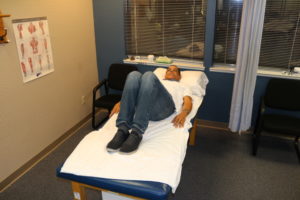
Step 2. Log roll into Sidelying.
This can be done with or without the help of a caregiver. Allow the patient to initiate this movement by reaching across their body with the opposite arm and allowing the bent legs to flop to the side. The movement is not complete until the patient is fully in sidelying.
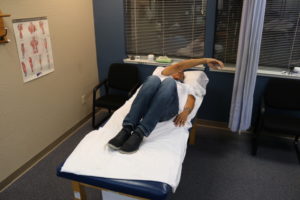
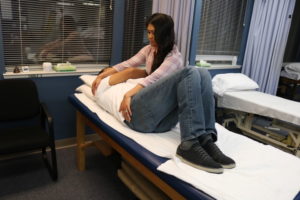
Another important thing for the caregiver to remember is that it’s important to use bodyweight rather than strength to help roll the patient. In this picture, you see the caregiver with her weight on her front foot. When the movement is initiated the caregiver keeps her back straight and shifts her bodyweight backwards thereby assisting the patient in the log roll into sidelying.
Step 3. Sidelying.
It’s important that the patient be completely in sidelying prior to trying to sit up because it takes less effort to accomplish the movement. It’s also a good spot to rest and take assessment of the patient’s status and gather thoughts about completing the movement.
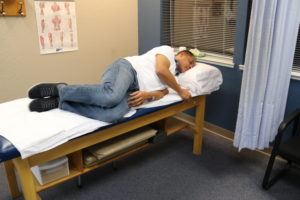
While in sidelying the patient can position their arms and hands to help them sit up. The elbow of the arm they are lying on will be used to push up from the bed (in this picture it’s the left arm). The free hand can be placed on the edge of the bed or bed rail to help push up when the time comes.

Step 4. Move Feet Forward Off the Bed.
The next step in sitting up from a supine position is to get the feet of the bed and allow them to drop toward the floor. While gravity takes control of the feet, this is the time when the patient uses both arms to push the body to an upright position.
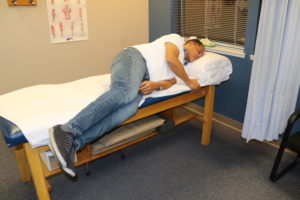
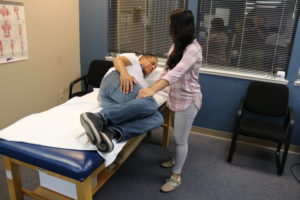
It gives a “see-saw” or “teeter-totter” effect to the motion. While one end of the body travels toward the floor, this essentially “un-weights” the upper end of the body and makes it a lot easier for it to rise into the air.
If the patient requires assist, its important to only give the amount necessary. The caregivers hand position and body position is critical. If the caregiver has to help with the legs, reach over the top of the legs and behind the knees to bring the legs forward and the feet of the bed.
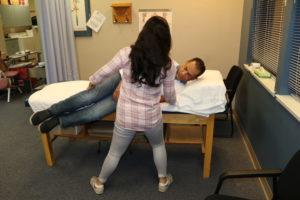
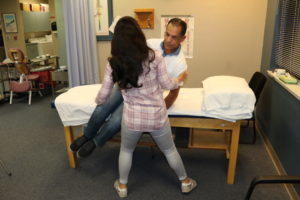
When assisting the patient with sitting upright, the hand opposite the feet should be placed under the shoulder that the patient is lying on.
To assist the patient to upright, the caregiver with the hand properly placed, shifts her bodyweight using her legs, and pushes the patient to the upright, rather than pulling with her arms.
Step 5. Sitting secure on the edge of the bed. The final step is to stabilize the patient as they are sitting on the edge of the bed and make sure they are secure.
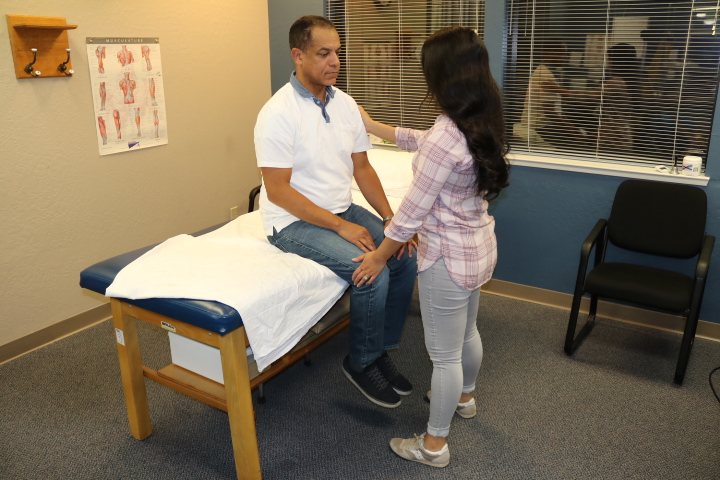
For a more detailed explanation, caregivers and follow the power point in the video below.